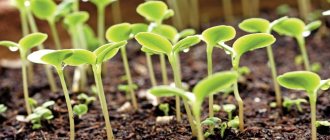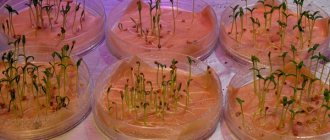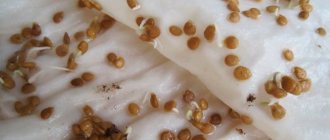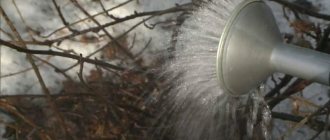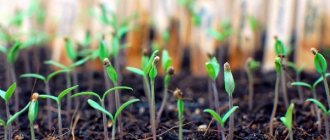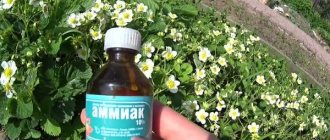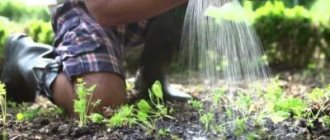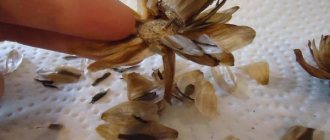It seems like this is the beginning of winter, spring is still far away, summer residents and gardeners can rest. But there is no rest for those who like to dig, plant, grow, and replant. And now active procurement and preparation of seeds for the next season begins. Seeds are collected from their own harvests, bought in stores and from hand, subscribed to catalogs, and exchanged with neighbors. Seeds from trusted stores, from trusted companies, in principle, do not require special preparation. Perhaps only those seeds that need stratification, scarification, and even those that are better to be soaked before sowing for faster germination. And how to soak it - there are many options, for every taste, every opportunity. One of them is soaking the seeds in hydrogen peroxide.
What seeds can be soaked in peroxide?
Some types of seed require additional soaking. These crops include:
- seed in a hard shell (watermelons, zucchini, sunflowers, cucumbers);
- seed material of doubtful origin;
- crops with a high content of oils, which reduce the speed of germination (dill, parsley, carrots);
- also these types of flowers (carnation, balsam).
We recommend reading these articles:
How to choose tomato seeds for seedlings at home
Favorable days for planting flowers in February 2020
How to choose bell pepper seeds for planting
Which seeds should not be soaked in hydrogen peroxide?
Seeds from well-known manufacturers have already gone through certain stages of processing before hitting the shelves. This must be taken into account and not do anything unnecessary and perhaps even harmful.
First of all, you cannot soak seeds with such industrial processing as pelleted (with a nutritious protective shell), encrusted (with a thin and water-soluble layer of disinfectants and growth-stimulating substances applied), as well as sprinters, laser and plasma seeds.
Ordinary seeds in bags, which do not have special protective shells, are also treated by manufacturers with disinfecting solutions, so there is no point in treating them again with anything, for example, potassium permanganate. The result will be “butter-butter”.
Official website of the newspaper "Prigorod"
Experienced summer residents know that before planting the seed fund for seedlings, they need to be soaked. This is an important process that allows seeds to germinate faster and then allows plants to grow quickly and sustainably.
Let's talk about the benefits of soaking seeds in hydrogen peroxide before planting, and also look at whether all crops can be treated in this way.
Why soak seeds before sowing?
Processing planting material before sowing has the following practical benefits:
1. Disinfection of planting material occurs. Most of the microorganisms that we cannot see with the naked eye die. The same fate awaits the egg clutches of insect pests.
2. Biochemical processes are activated. Growth begins to occur in the seeds, metabolism accelerates, and saturation with useful microelements occurs. In this case, some of the toxins, on the contrary, are removed.
3. Immunity, germination and resistance to disease are increased.
4. The hard outer shell softens. The “shell” protects the inner sprout of the seed from mechanical damage and external influences, but when the time comes, the sprout must break through this shell. Therefore, if it is soft, the plant will sprout faster.
Which seeds should be soaked?
In general, hydrogen peroxide is harmless and can be used on all seeds for disinfection purposes. Especially if you have doubts about the quality of planting material.
But soaking (that is, leaving the seeds in the solution for a long time) is not possible with all crops.
It is recommended to carry out the procedure with those categories of plants that do not germinate well. For example, these include crops with a dense outer shell. These are melons (watermelon), pumpkin (zucchini, cucumber, pumpkin), nightshades (tomato, eggplant, bell pepper). Also included in this category are beets and sunflowers. It would be a good idea to soak the seeds, which contain a fairly high content of essential oils. This category includes dill, carrots, and parsley.
ON A NOTE. Essential oils reduce the rate of seed germination.
It is also recommended to soak flower seeds: carnation, balsam, pelargonium, salvia, etc.
Which seeds are contraindicated for soaking?
It is not recommended to moisten seeds that have already undergone certain industrial processing with peroxide. This includes pelleted (and also encrusted, laser and plasma) seeds, as well as sprinters.
Hydrogen peroxide will simply destroy all the useful shell with which the planting material was covered at the factory.
ON A NOTE. Information about what treatment was carried out on the seeds at the plant is located on the packs. Therefore, before immersing the seeds in a solution with peroxide, carefully study the packaging.
How does hydrogen peroxide affect planting material?
The drug softens the outer shell and saturates the seeds with oxygen. Hydrogen peroxide also destroys chemical compounds called growth inhibitors. They slow down the germination process. When soaked, the inhibitors disintegrate, and the seeds actively grow.
In addition, under the influence of the drug, the death of most pathogenic microorganisms and pest eggs occurs.
How to soak seeds for processing (step-by-step instructions)
The step-by-step algorithm for carrying out the procedure is quite simple:
1. Seed material is prepared. Please note that seeds of different crops should not be soaked together. Since they may have different recommended processing times.
2. A solution is prepared with the active substance in the required proportion (2 tablespoons of peroxide per 1 liter of water or 1 teaspoon per 200 ml).
3. The seeds are placed in a gauze or fabric bag and lowered into a container with the composition.
4. After the required period, the seeds are removed from the solution and washed with running water or immersed in clean water for 20–30 minutes.
ON A NOTE. If planting time is running out, you can soak the seeds in undiluted peroxide. But no more than 20 minutes! Then don’t forget to rinse the seeds with water anyway.
If you just want to disinfect the planting material, then place the seeds in an undiluted solution for 20 minutes.
Which seeds and how long should I soak?
The time of the procedure depends on the properties of the seeds. Where it is necessary to soften a shell that is too hard, soaking is carried out longer; where it is necessary to neutralize the effect of essential oils - less.
Tomatoes, peppers, eggplants, beets – 24 hours.
Vegetables, fruits, flowers – 12 hours.
Watermelon, cucumber, sunflower, pumpkin, zucchini – 24 hours. But first, you must keep the seeds of these crops in water for 1 hour.
ON A NOTE. For the purpose of disinfecting planting material, it is recommended to change the solution every 4–6 hours. This increases the efficiency of killing germs.
Common mistakes:
1. The solution in the container with planting material does not change. The water with peroxide must be drained periodically so that the seeds do not begin to ferment and suffocate.
2. Treatment of coated seeds is carried out. Seed material in “colored packs” has generally already undergone all the necessary pre-sowing treatment. Additional exposure will only make it worse.
3. Failure to comply with the concentration of the active substance or soaking time.
Is it possible to do without treating with peroxide?
Yes. This is an optional procedure, but it really helps the seeds germinate better and grow faster.
The column is led by Olga BABALOVA
Share link:
How to soak seeds in hydrogen peroxide before planting
Processing methods:
- Prepare a solution (1 tablespoon of product per 0.5 liter of water), dip seeds (wrapped in gauze) into it, and keep for 24 hours (change the liquid every 5 hours). Then the future peppers are washed, allowed to dry and sown in the prepared soil.
- Before soaking the grains in peroxide, they are placed in clean water for half an hour.
- If there is a need to sow vegetables for seedlings as quickly as possible, then the planting material is dipped in hydrogen peroxide for 30 minutes.
Useful properties of tomato seed product
Under natural growth conditions, plants receive the necessary nutrition and protection from rainwater.
When growing industrially or at home, you cannot rely on the mercy of nature. Collecting rainwater reserves and ensuring their cleanliness is an extremely labor-intensive and impractical process. The best alternative for obtaining a bountiful harvest is soaking tomato seeds in hydrogen peroxide.
Hydrogen peroxide or hydrogen peroxide is a powerful antiseptic disinfectant . It contains atomic molecular oxygen: during decay, it is this element that enriches the seeds with oxygen. Another important property of the element is its oxidative effect (protection and disinfection of seeds from microbes).
What other benefits of peroxide are there?
- Activation of metabolic processes and acceleration of the germination period.
- Neutralization of the dangerous effects of nitrates, nitrites.
- Better absorption of microelements and nutrients.
Before you start soaking in peroxide, you need to place the seeds in water at room temperature. Leave for 20-30 minutes. This procedure will soften the protective shell and the effect of soaking in peroxide will be more noticeable.
Soaking seeds in a sponge with hydrogen peroxide
Soaking seeds in a solution of hydrogen peroxide using ordinary household sponges is a relatively new method that has not yet become generally known. The algorithm for such soaking before planting seeds:
- Take two new foam sponges.
- Prepare a solution of water with hydrogen peroxide (1 teaspoon per half liter of water).
- Soak the first sponge in the solution and squeeze out.
- Place the seeds on the surface of the sponge.
- Wet the second sponge in the same way as the first.
- Cover the seeds located on the first sponge with the second sponge and secure the sponges together with rubber bands.
- Place the resulting “sandwich” in a bag and tie it.
- Place the seeds in a warm place (23-25°C).
Preparing seeds before soaking
Large, mature seeds give the highest yield. Therefore, during preparation, they must be calibrated using table salt. For tomato, pepper, and eggplant seeds, use a 5 percent solution of table (kitchen) salt; cucumber, cabbage, beets - 3 percent solution (30 g of salt per 1 liter of water). The seeds are placed in the solution and stirred for 4-8 minutes. The sunken ones are separated, washed thoroughly with water, and dried. The seeds are easy to sow if mixed with chalk or tooth powder. So, with the help of salt and soaking, you can reject unsuitable seeds.
Rooting cuttings using hydrogen peroxide
Noticing the ability of hydrogen peroxide to accelerate seed germination, agronomists tried to root cuttings with it - the result was impressive! To speed up the appearance of roots on green or lignified cuttings, as well as to protect them from rotting, root them in a jar filled with water with the addition of peroxide (1 teaspoon per 1 liter). For the first 2 - 3 days, replace the solution daily with freshly prepared one - and then simply add little by little to the jar as it evaporates.
For those who buy seedlings on the market, we advise you to place them in the above-described solution for 1 - 2 hours before planting them in the ground. This procedure will help restore dried plant roots, reduce the risk of seedlings being damaged by root rot and will contribute to their better rooting in a new place.
Effect of hydrogen peroxide on seeds
Hydrogen peroxide (chemical formula H2O2) has a positive effect on seeds. Thanks to him:
- seeds germinate better, shoots appear faster;
- the immunity of young plants is strengthened;
- the resistance of garden crops to unfavorable environmental factors increases.
Tomato seedlings grown from seeds disinfected with the product take root better in a new planting site and are less susceptible to rotting. As a result of the use of peroxide, the yield of vegetables increases.
The use of hydrogen peroxide as a fertilizer and for prevention against pests and diseases.
With regular watering of the soil with a solution of hydrogen peroxide, the roots of the plants are healthy, and additional aeration of the soil occurs. As a fertilizer, it is enough to use a mixture of a teaspoon of H2O2 per liter of water. This fertilizer is safe because a few days after use it breaks down into safe oxygen and water.
The drug can be used not only to combat plant diseases, but also to prevent them. When replanting, you need to treat the pot and roots with a solution of hydrogen peroxide in a ratio of 1 tablespoon per liter of water.
We recommend reading these articles:
Planting pepper seedlings in 2021 according to the lunar calendar in February
Lunar sowing calendar for February 2021 for gardeners and gardeners
Planting tulips in spring: when and how to plant in the Moscow region
This solution can also be used to water plants; this will keep the root system healthy and protect the soil from pests.
Seedlings and seedlings can be watered 2-3 times. Application will relieve them of root rot and blackleg. It is recommended to spray indoor and garden crops daily with a mixture prepared from a liter of water and 50 ml of a 3% peroxide solution.
This will give the leaves additional oxygen and get rid of pathogens.
To control pests (insecticide), an effective drug is prepared as follows. 50 grams of sugar and 50 ml of 3% H2O2 are added to a liter of water. You can use it once a week. This has been proven to help get rid of aphids, scale insects and other problems.
It has been verified that spraying seedlings with water with 3% peroxide at the rate of a tablespoon per 5 liters of water will help in the fight against late blight.
Greenhouses and irrigation pipes can be treated with the preparation. This kills harmful bacteria, mold and promotes the decomposition of harmful organic matter that accumulates there.
Watering and spraying plants with hydrogen peroxide
Hydrogen peroxide is widely used for indoor plants. Based on it, you can prepare solutions for watering and spraying. The universal recipe is 20 ml of 3% H2O2 per liter of water. Adding it to the soil promotes greater aeration, since the active oxygen ion is released, combines with another atom and forms a stable oxygen molecule. Plants receive it in greater quantities than before the procedure. Acting as an oxidizing agent, it kills pathogenic bacteria, rot and mold that form in the soil. There are recommendations on how to water flowers with hydrogen peroxide, namely 2-3 times a week. Scientists have found that it is precisely after this time that the solution is added to the soil that it breaks down into water and oxygen.
The universal solution can be used for spraying and watering garden and vegetable plants. When oxygen is released, it acts as a kind of leavening agent - the root system and sprouts receive it in greater quantities. The seedlings take root and grow much better. The solution can revive fading crops. Also, a solution of hydrogen peroxide is indispensable for soils that receive excess moisture. Plants receive a lot of water and little oxygen, so they simply cannot breathe. When a hydrogen peroxide solution is added to such soil, the root system receives additional oxygen when the H2O2 molecule breaks down. It is recommended to water no more than once a week. You can spray the sprouts with a solution, this will give the leaves more oxygen and kill pathogens. The growth and productivity of crops will increase.
Hydrogen peroxide as fertilizer for flowers
Hydrogen peroxide keeps plant roots healthy. Additional soil aeration helps plant roots absorb micro and macroelements. The released oxygen “eats” dead roots and does not allow pathogenic bacteria to multiply. Add a tablespoon of hydrogen peroxide per liter of water and water the plants once a week. There is no need to irrigate the leaves with this solution as a fertilizer. Since peroxide comes in more than just 3%, you may find a table of dilutions of different concentrations useful.
Tried and tested tips
In gardening magazines there are recommendations for treating seeds with peroxide that differ from the usual options:
- soaking for 20 minutes in a 10% peroxide solution disinfects any seeds well;
- the use of a 0.4% peroxide solution for 12-24 hours acts as a growth stimulator;
- spray the swollen seeds with a peroxide solution (1 tbsp + 0.5 l of water) from a spray bottle;
- For soaking, use a peroxide solution (1 tbsp + 0.5 l) with the addition of a few drops of pink manganese solution.
Hydrogen peroxide is an affordable and universal means for feeding and treating plants, treating seeds and soil. Its use has been tested in practice by many gardeners and, when used correctly, gives good results.
Hydrogen peroxide for growing plants without soil and use as a herbicide
Hydrogen peroxide is indispensable when using hydroponics and aquaponics. It is enough to add it to the water to provide health and sufficient oxygen to the plants to rid them of root rot.
10% hydrogen peroxide is used as a herbicide. The solution is poured onto the weeds and moss. Then it is left for some time, avoiding contact of water with the treated plants. Hydrogen peroxide loses its properties in sunlight, so it is better to carry out the procedure in the mornings or evenings.
Growth stimulator for seeds
Methods of soaking seeds in hydrogen peroxide before planting, in addition to disinfection, also have a stimulating effect. The seeds contain inhibitors that prevent them from germinating. In nature, they are destroyed naturally through the process of oxidation. Soap, ammonia, boric acid, potassium permanganate, and iodine will also help in the garden. When H2O2 works, its molecule breaks down and active oxygen is released, which is an active oxidizing agent. Therefore, it is more likely to destroy the inhibitor, which increases the percentage of germination and promotes more active germination. Scientists have proven that the use of this drug as a stimulant is more effective than the use of the commercial drug Epin-Extra or potassium permanganate. Experiments have shown that the percentage of germination of tomatoes after such treatment can reach 90%, corn - 95%. After soaking cabbage seeds, seedlings appear earlier than usual in 2 to 7 days.
